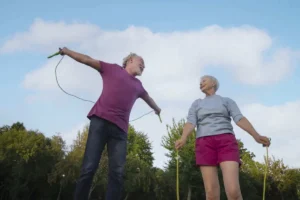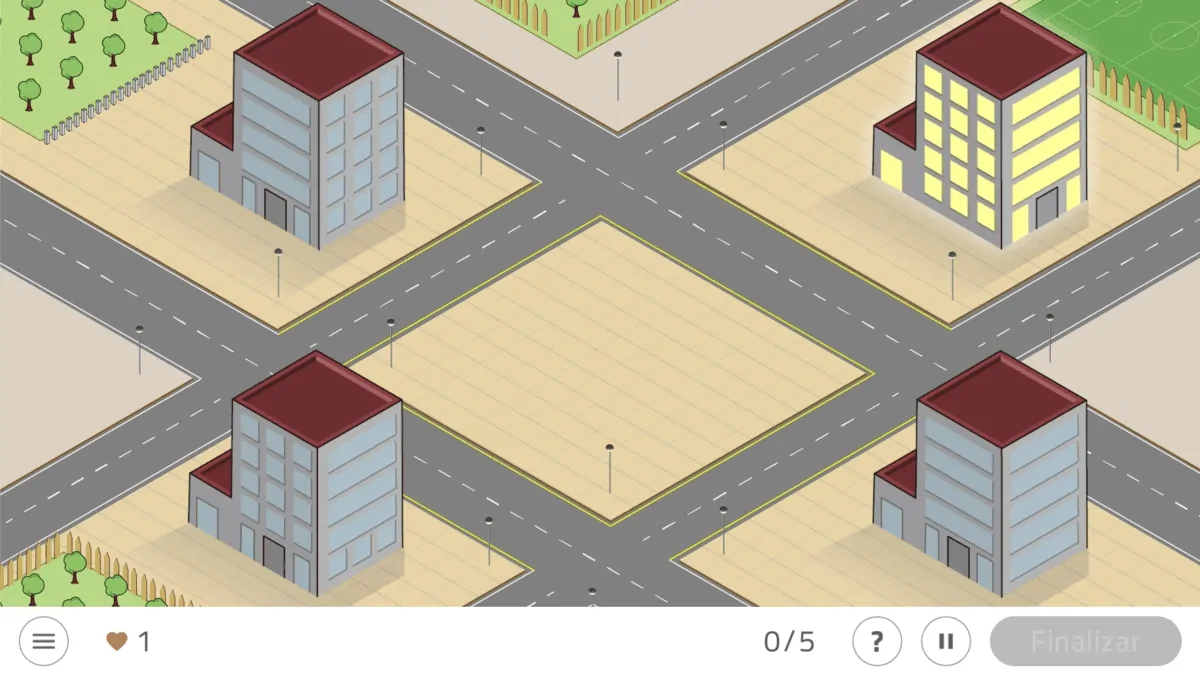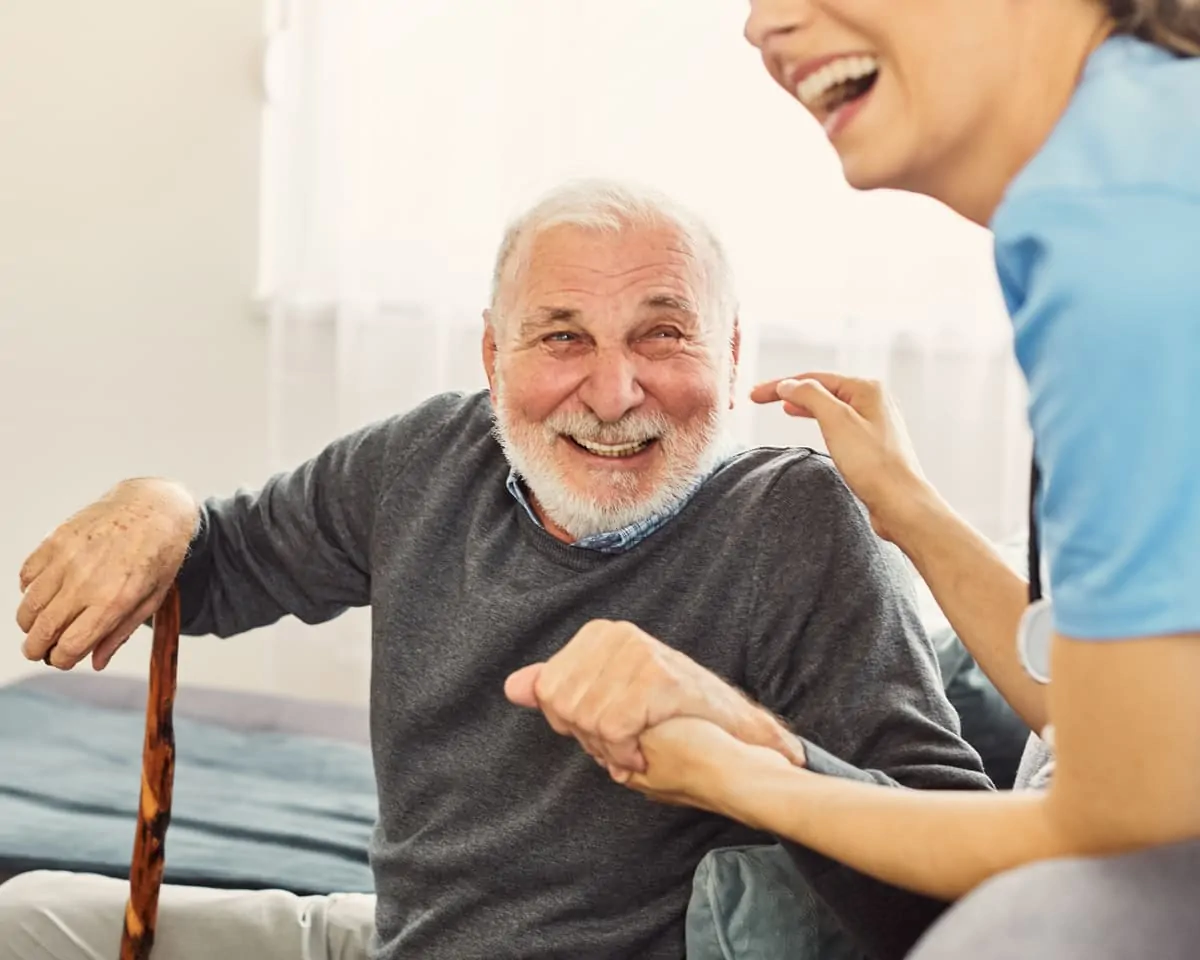Clinical neuropsychologist Lidia Pérez presents in this article a study on the evolution of cognitive function in adults with acquired brain injury following the implementation of physical activity in daily life.
Acquired brain injury (ABI), mainly strokes (ACV) and traumatic brain injury (TBI), is the leading cause of disability in adults. The sequelae of the ABI can persist for years after the injury (chronic phase), with the consequences this entails for the healthcare system and at the personal, family, social and economic levels. The most common sequelae affect the cognitive, communicative, motor and sensory.
Multidisciplinary neurorehabilitation treatments have solid evidence, but their effectiveness could be enhanced by combining additional strategies.
Research in animal models has shown that physical exercise can exert neuroprotective and neurorestorative effects and improve cognitive function after an ABI.
Furthermore, both in healthy populations and in people with cognitive deficits there appears to be an association between the amount of physical activity in daily life and cognitive function. Therefore, exercise and physical activity could contribute to cognitive rehabilitation in people with ABI.
Research on cognitive function in adults with acquired brain injury
The research consists of two studies:
First study
In the first, the evolution of cognitive function and quality of life was examined over one year, before and after implementing a supervised intervention with aerobic physical exercise, in a sample of adults with severe TBI in the chronic phase.
Second study
The second study examined the association between, on the one hand, the amount of physical activity and sedentary behavior, and, on the other hand, cognitive function, quality of life and motor functionality in people with stroke. In addition, cognitive telerehabilitation was administered for 24 weeks via the NeuronUP platform.
Overall results of the research on cognitive function in adults with acquired brain injury
Research results
Results of the first study
In the first study, the supervised physical exercise program was associated with an increase in physical activity in daily life (measured by accelerometry). Similar to previous data with people with subacute TBI, very low correlations were found between subjective measures (Borg scale) and objective measures (percentage of heart rate reserve) of exercise intensity.
Results of the second study
The second study was conducted with a sample of patients with chronic-phase stroke during the Covid-19 pandemic, meaning it was not possible to apply any in-person intervention. Significant positive correlations were found between the level of physical activity (measured by accelerometry) and performance on various cognitive tests. However, this association was only significant in the younger patients (under 60 years old).
Moreover, the direction of the association was opposite in men and women (in women, surprisingly, some cognitive functions correlated positively with a higher proportion of sedentary time relative to walking time).
The level of adherence to telerehabilitation was high, especially during the first 12 weeks of the intervention and among those participants who had been receiving in-person rehabilitation before the pandemic. The subjective estimate of sedentary time and physical activity (via questionnaire) showed very poor correspondence with the accelerometer record.
Overall results
In both studies participants experienced improvements in some cognitive functions, although the design does not allow attributing these improvements to the interventions applied.
The obtained data support the notion that implementing programs to promote physical activity and reduce sedentary behavior could enhance the benefits of cognitive rehabilitation in people with ABI in the chronic phase.
However, it is necessary to thoroughly investigate possible sex or age differences (among other factors), in order to adapt these programs in a more individualized way based on those differences.
Program design should also take into account that in people with cognitive impairments associated with ABI, self-reported measures of exercise and physical activity may be inadequate.

Subscribe
to our
Newsletter
Conclusion of the research on cognitive function in adults with acquired brain injury
In conclusion, despite the heterogeneous profile of sequelae experienced by people after suffering an ABI, even in the chronic phase, they can experience improvements. This confirms the effectiveness of neurorehabilitation programs.
Furthermore, participating in a supervised physical exercise program appears to generalize and encourage daily physical activity. This, in addition to enhancing cognitive aspects such as memory or learning, is a protective factor against recurrence of another type of ABI or a future neurodegenerative disease. There is also an association between the degree of cognitive impairment and the level of physical activity/sedentary behavior, an important and little-studied variable in neurorehabilitation programs.
On the other hand, cognitive telerehabilitation programs like NeuronUP that include individualized follow-up and supervision by a professional show a good degree of adherence in people with chronic ABI.
Moreover, having previously undergone in-person cognitive rehabilitation is associated with greater adherence to cognitive telerehabilitation programs.
All in all, there is much ground to explore in the relationship between cognition and physical activity in people with chronic ABI, but in light of the results found the need to design programs to reduce sedentary behavior is evident and to increase daily physical activity as contributing factors to the improvement of cognitive sequelae years after the injury.
Bibliografía
See the full research at: Pérez-Lopez, Lidia, Coll-Andreu, Margalida, Morris.P.T. (2022). Función cognitiva en adultos con daño cerebral adquirido: relación con la actividad física y el sedentarismo. Universitat Autònoma de Barcelona.
If you liked this article about the research on cognitive function in adults with acquired brain injury, you may also be interested in the following articles:
“This article has been translated. Link to the original article in Spanish:”
Función cognitiva en adultos con daño cerebral adquirido: relación con la actividad física y el sedentarismo







 Game to train episodic memory in children: Learning Names
Game to train episodic memory in children: Learning Names
Leave a Reply